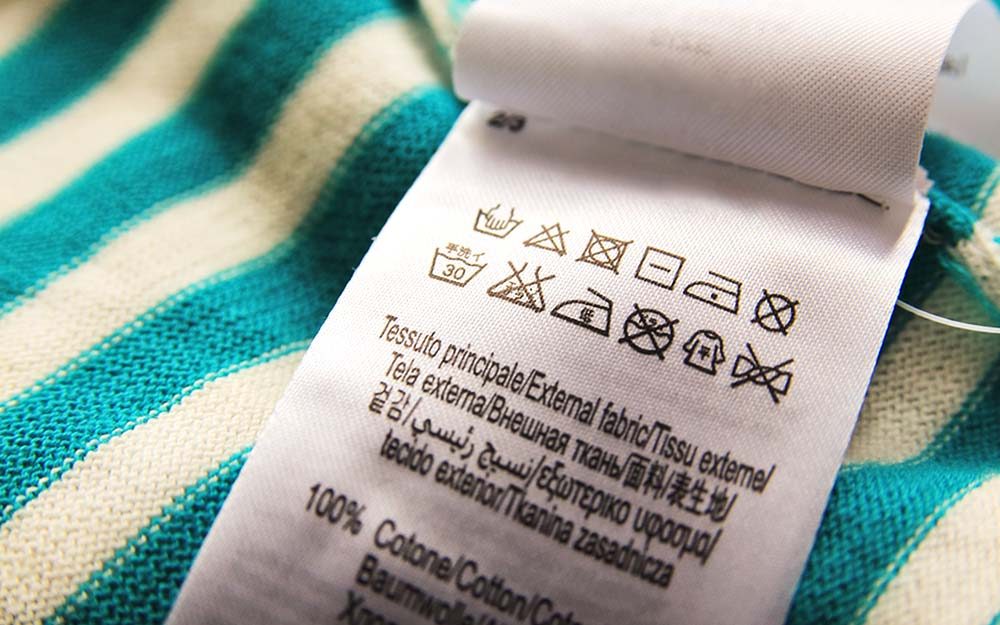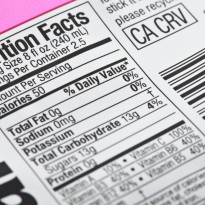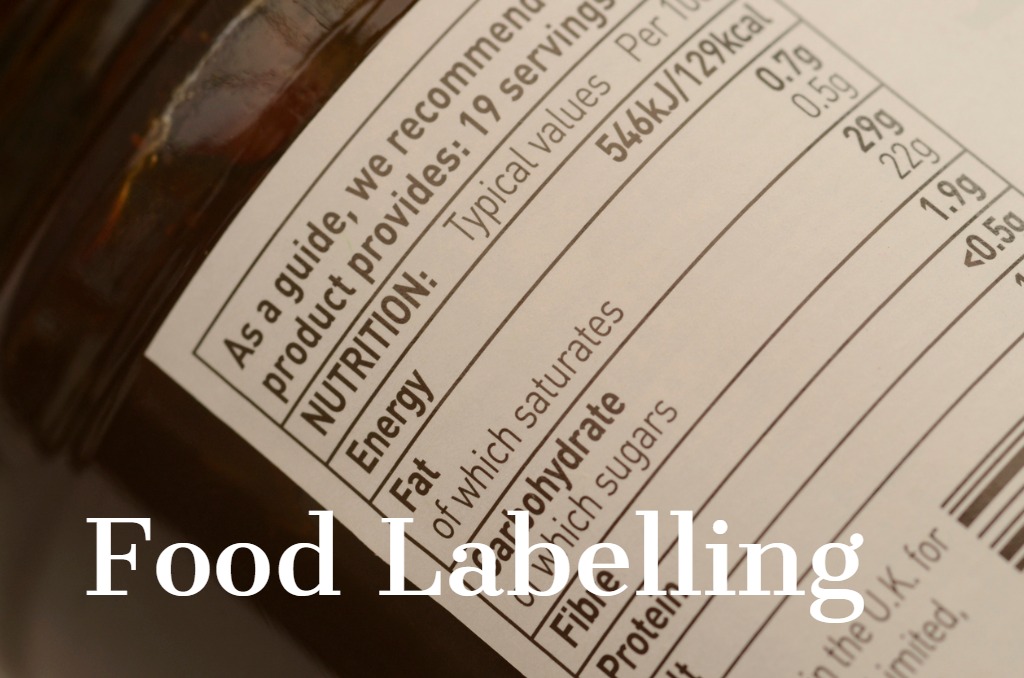42 food labels by law
Food allergen labelling changes become law Millions of allergy sufferers across the country will be protected by a new law laid in Parliament today which will require more foods to be labelled with allergen information. The law, which comes... › blog › topicsAlabama Cottage Food Law: Basic Rules and Regulations ... May 16, 2022 · The Cottage Food Law requires the following on labels in a minimum 10-point font: Name of the individual or business; Physical address or post office box of the individual or business; Common name of the food; Statement: This product may contain allergens. This food is not inspected by the Health Department.
Australian legal requirements for food labelling | MDW Lawyers In most cases, your food label must include a statement that identifies where the food was grown, produced, made, or packaged. These claims cannot be used interchangeably, as each carry a different meaning: "Grown in" means where the food or ingredients came from. This claim is mostly used for fresh food

Food labels by law
Nutrition Labels 101: What's Required? What's Optional? 5. Trans Fat. Trans fat is the worst of the "bad fats," which is why in 2006 the FDA began requiring it to be listed separately on nutrition labels. Trans fat, like saturated fat, increases LDL cholesterol levels (i.e., "bad" cholesterol) but also lowers HDL cholesterol levels (i.e., "good" cholesterol). So it's a bit of a ... Food Labeling Overview - National Agricultural Law Center Food labeling laws and regulations address packaging and point-of-purchase advertising for food and supplements sold in retail establishments, menus in restaurants, and alcoholic beverage labeling. Food labeling laws and regulations also cover claims made by marketing endeavors, including claims about the purity of food products or health benefits. Food labelling - healthywa.wa.gov.au The following information outlines general food labelling requirements contained in the Code. Unless an exemption applies, the following information must be included on labels for food packages for retail sale or for catering purposes. Name or description of the food Name and business address for an Australia or New Zealand supplier
Food labels by law. List of food labeling regulations - Wikipedia Regulation 1151/2012 on quality schemes for agricultural products and foodstuffs: defines "labelling" as "any words, particulars, trade marks, brand name, pictorial matter or symbol relating to a foodstuff and placed on any packaging, document, notice, label, ring or collar accompanying or referring to such foodstuff". Food Product Dating | Food Safety and Inspection Service 1 The U.S. Food and Drug Administration requires a "use by" date on infant formula.The U.S. Department of Agriculture (USDA) does not require quality or food safety date labels for products under its purview. However, the USDA does require a "pack date" for poultry products and thermally processed, commercially sterile products to help identify product lots and facilitate trace-back ... › nutritionsource › food-labelUnderstanding Food Labels | The Nutrition Source | Harvard T ... Chile implemented the Law of Food Labeling and Advertising in 2016, comprised of mandatory front-of-package (FOP) warning labels, restrictions on child-directed marketing, and the banning of sales in schools of all foods and beverages containing added sugars, sodium, or saturated fats that exceeded set nutrient or calorie thresholds. [1] Food Labeling Basics - Food Quality & Safety What we see on a food label today is the result of many years of laws and regulations, including the Food, Drug, and Cosmetic Act of 1938, the Fair Packaging and Labeling Act of 1966, the Nutrition Labeling and Education Act of 1990, and the Food Allergen Labeling and Consumer Protection Act of 2006. All of these laws have led to a complicated ...
Labelling - Food Standards FSANZ sets food labelling standards in the Food Standards Code. These standards are enforced by the Australian states and territories and, in New Zealand, by the Ministry for Primary Industries (MPI). The Food Standards Code includes the general labelling and information requirements (Chapter 1 of the Code) that are relevant to all foods, and sets ... Food information to consumers - legislation - Food Safety EU law on food information to consumers. Regulation (EU) No 1169/2011 on the provision of food information to consumers (FIC Regulation) entered into application on 13 December 2014.The obligation to provide nutrition information applies since 13 December 2016.. This Regulation provides in particular clearer and harmonised presentation of allergens (e.g. soy, nuts, gluten, and lactose) for ... Food Labeling - USDA Food labeling laws cover product packaging, point-of-purchase advertisements for foods or dietary supplements sold in retail establishments, restaurant menus, labels on alcoholic beverages, and more. Food labeling also covers claims made on these marketing endeavors, including claims about the purity of food products or health benefits. General food labelling | The Food & Drink Federation General food labelling. Food labelling is an important means of providing essential information to consumers. This includes details on a food's ingredients, composition, durability, storage and preparation requirements, any safety related information and identification of the manufacturer. Detailed rules are laid down in law on what food ...
The Food Labelling Regulations 1996 - Legislation.gov.uk General labelling requirement Name of the food 6. Name prescribed by law 7. Customary name 8. Indication of true nature of food 9. Form of name 10. Trade marks, brand names and fancy names 11.... Food labelling: giving food information to consumers - GOV.UK You must include a business name and address on the packaging or food label of pre-packed food products. This must be either: the name of the business whose name the food is marketed under the... About food labels - Canada.ca By law, most packaged food must be labelled with: a nutrition facts table, which gives you information on: serving size. calories. nutrients. percent daily values (% DV) an ingredient list, which lists all the ingredients in a food by weight. this begins with the ingredient that weighs the most and ends with the ingredient that weighs the least ... › organic-food-labelsOrganic on Food Labels | FDA Mar 07, 2022 · For more information on the use of the term “organic” on food labels and USDA requirements, go to the National Organic Program website. Content current as of: 03/07/2022.
Labelling - Food Standards Food labels also help to protect public health and safety by displaying information such as use by dates, ingredients, certain allergens, instructions for storage and preparation, and advisory and warning statements. FSANZ sets standards for what information must be on food labels. FSANZ has developed information on a range of labelling topics.
Packaging and labelling | Food Standards Agency The following information must appear by law on food labels and packaging: Name of the food. The name of the food must be clearly stated on the packaging and not be misleading. If there is a name...
› how-to-read-food-labelsHow to read food labels | healthdirect What information is on the food label? In Australia, the law requires all manufactured foods to carry labels containing safety and nutrition information. This information helps you to make decisions about the food you buy and eat so you can follow a healthy diet. The label will tell you: the name of the product, describing accurately what it is
Food labelling - Health.vic Food labels are required by law to carry essential information so that consumers are informed of the nature and properties of foods prior to purchase -- this includes statements about the presence of allergenic ingredients that could lead to life-threatening allergic reactions in susceptible persons if the labelling information is not accurate.
PDF Food Labeling Guide - Food and Drug Administration Office of Nutrition, Labeling, and Dietary Supplements HFS-800 Center for Food Safety and Applied Nutrition Food and Drug Administration 5100 Paint Branch Parkway College Park, MD 20740 (Tel)...
Labelling laws | NSW Food Authority The Food Standards Code states that all food labels must contain the following information: Name and/or description of the food; Identification of the 'lot' number * Name and Australian street address of the supplier of food * List of ingredients; Date mark; Nutrition information panel (NIP) Country of origin of the food; Warning and advisory statements
Cottage Food Laws | LABELS Your home's physical address must be on the label since that is the location where the food was prepared. (A cottage food operator by law must prepare their food in their primary residence.) The cottage food law does not require the customer to visit your home.
Food labelling and packaging: Overview - GOV.UK To sell food and drink products, the label must be: clear and easy to read permanent easy to understand easily visible not misleading You must show certain basic information and list the...
Food labelling - general EU rules - Your Europe Labelling Mandatory information must be printed using a font with a minimum x-height of 1.2 millimetres. If the largest surface area of packaging is less than 80 cm², you can use a minimum x-height of 0.9 mm. For packaging surface of less than 10 cm², you must list: name of the food
› foodlaw › overviewAdulterated and Misbranded — Food Law - North Dakota State ... For example, food firms are in violation of the law and engaged in prohibited activities (and thus are subject to penalties/fines or the food may be seized) if the firm 1) is not registered with the FDA (21 U.S.C. 331(dd)), 2) refuses to allow an inspection of the facility or records (21 U.S.C. 331(f), or 3) fails to report a problem (21 U.S.C ...
› food › food-labeling-nutritionFood Labeling & Nutrition | FDA May 16, 2022 · Food labeling is required for most prepared foods, such as breads, cereals, canned and frozen foods, snacks, desserts, drinks, etc. Nutrition labeling for raw produce (fruits and vegetables) and ...
GMO Labeling Laws per Country - Global Food Safety Resource GMO Labeling Laws If you look at the table below, only three countries implement a complete and total ban of genetically engineered (GE) food both imported and cultivated. Most of the countries in the EU region, Australia and New Zealand implement mandatory labeling with up to 1% labeling threshold of GMO content.
› foodlaw › processingsectorPackaging, Labeling, Transporting, Storing — Food Law Indirect food additives (e.g., packaging) may be only used under conditions of good manufacturing practice; that is, the quantity 1) does not exceed the amount reasonably required to accomplish the intended effect in the food, 2) shall not exceed any prescribed limitations, 3) shall not be intended to accomplish any physical or technical effect ...
Nutrition labelling - Food Safety Which nutrition information is mandatory on food labels? As from December 2016, Regulation (EU) No 1169/2011 requires the vast majority of pre-packed foods to bear a nutrition declaration. It must provide the energy value and the amounts of fat, saturates, carbohydrate, sugars, protein and salt of the food.
FDA Food Product Labeling & Packaging Requirements - ESHA The Food Allergen Labeling and Consumer Protection Act of 2004 (FALCPA) mandates that packaged food items must declare, in plain language, the presence of any major food allergens (Milk, Egg, Fish, Crustacean shellfish, Tree nuts, Wheat, Peanuts, Soybeans, Sesame) on the product packaging.
Food labelling regulations & composition | Food Standard Scotland ... Regulation (EU) No 1169/2011 on the provision of Food Information to Consumers sets out how consumers should be provided with food information to allow them to make informed choices and to make safe use of food. The Regulation updates and consolidates the European Union rules on general food labelling and nutrition labelling.
Food labelling - healthywa.wa.gov.au The following information outlines general food labelling requirements contained in the Code. Unless an exemption applies, the following information must be included on labels for food packages for retail sale or for catering purposes. Name or description of the food Name and business address for an Australia or New Zealand supplier














Post a Comment for "42 food labels by law"